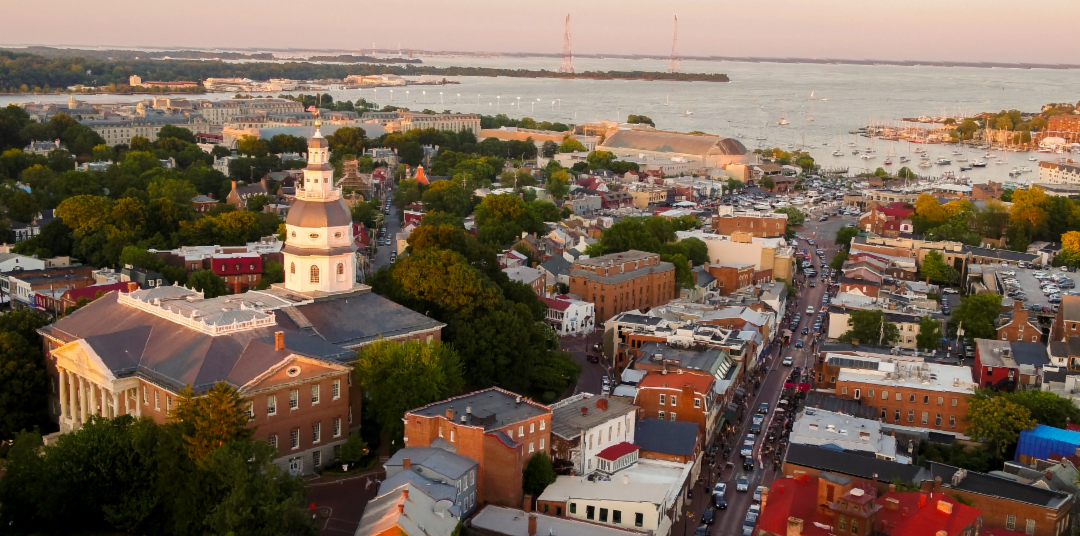Written by Mike Bonnell
Working to conserve 30% of the land in the Chesapeake watershed by 2030 is a lofty yet attainable goal. To get to this goal and put the big points on the board, it’s essential to be in the know about how land conservation is funded in the biggest states in the Chesapeake Bay watershed. Perhaps a certain tax credit in one state can be used as a model for others. Or there are other policies that make state and local money do more work for the land and the people. It is also important to think about how these programs fund smaller acquisitions that result in more equitable access as well. Here are the most effective and big-budget programs in the main watershed states and their recent progress. As you read, keep in mind the ways these play to the state’s strengths and how they could possibly be adapted to your own.
MARYLAND:
In Maryland, Program Open Space is by far the largest program in the state. It was created in 1969 and has provided funding to a wide range of land conservation programs. When someone in Maryland buys property, a 0.5% tax is placed on the purchase. This tax supplies money to counties based on population and real estate sale volume, as well as to programs like Program Open Space, the Rural Legacy Program, and the Maryland Ag Land Preservation Fund (MALPF). In FY2024 Program Open Space will be receiving $172 million in transfer tax revenue for conservation, as well as $19 million for the Program Open Space Public Access Program. Since its establishment, POS has protected over 415,000 acres of land and awarded over 6900 grants. So far in 2023, the Program has protected 977 acres, and has over $174 million appropriated for FY2023. It has also made strides in providing open space within 15 minutes of most Maryland residents, as highlighted in the CCP Green Space Equity mapper. Recent changes in Maryland legislation will also lead to increased funding for conservation in underserved communities. Pushing for smart policies like this in your state can provide more funding for its programs.

VIRGINIA:
In Virginia, one of the most significant contributors to the land conservation movement is the Land Preservation Tax Credit. Under the law, a landowner can receive an income tax credit equal to 40 percent of the market value of donated land or an easement. In 2015 and 2016, taxpayers could use up to $20,000 per year and then $50,000 per year in subsequent years. In 2021, tax credits reached the $75 million dollar cap, conserving nearly 38,000 acres of land across 60 localities. Even more recently in 2023, Virginia announced the conservation of its one millionth acre thanks in part to the tax credit. These tax credits require the land to be claimed for different conservation purposes, including agricultural use, scenic open space preservation, historic preservation and more. Maryland has a similar tax credit program, with a maximum credit of 5,000 per year. The expansion of a program akin to Virginia’s in other states can further incentivize conservation for landowners.

PENNSYLVANIA:
Pennsylvania’s Keystone Recreation, Park and Conservation Fund has provided financial support to conservation efforts in the state since the creation of the Key 93 Initiative in 1993. Since then, it has allocated over $1.25 billion in community greenspace and improvement projects, including efforts that have protected 161,500 acres in Pennsylvania. It leverages 15% of the overall income from PA’s deed transfer tax. Similar to Maryland, the tax itself is an additional 1% on the final sale price of a property that goes directly to the state. Much of that money goes to the Pennsylvania Department of Conservation and Recreation for land acquisition, as well as improvements to parks and grant programs for other land trusts. For example, the Keystone Fund forms part of the funding for the Community Conservation Partnerships Program grant which in 2022 awarded “approximately $90 million to more than 330 local and community projects statewide. Those awards would help build or renovate more than 140 local parks, 54 miles of trails and permanently protect more than 7,000 acres of land for public recreation.” The fund has expanded greatly in past years, from awarding $3.3 million in grant funding in 2020 to $5.3 million in 2021 and 2022. While the program currently relies solely on funding from the deed transfer tax, the Key 93 Initiative was originally funded by a 5-year bond to help get things off the ground. Inspiring initiatives and programs like these can get more money in the hands of those doing the on-the-ground work to protect the watershed.
There are plenty of powerful conservation-oriented programs throughout the watershed. Large landscape conservation requires lots of money and effort, and these state programs allow development and economic activity to work partially in favor of preservation rather than solely against it. Additionally, states are expanding their legislation to more equitably serve the people that live in them. Using the programs in each individual state as a model for others can lead to innovation and improvement in the systems that accelerate our work.
This information is an update to the comprehensive conservation progress snapshot undertaken in the 2019 CCP Milestone Report. Further information on these programs, as well as other significant programs in each watershed state, can also be found on The Trust for Public Land’s Conservation Almanac.
Photo Credit:
- Pictures of Money
- Annapolis.gov
- LendingMemo
Lightning Update is a regular communication of the Chesapeake Conservation Partnership. Any opinions expressed are those of the authors and do not necessarily reflect positions of the Partnership or member organizations.
To share a success story, news, or important event, send your information to:
Support for the Chesapeake Conservation Partnership is provided by:
National Park Service Chesapeake
EPA Chesapeake Bay Program
USDA Forest Service
Pennsylvania Department of Conservation & Natural Resources
Maryland Department of Natural Resources
Virginia Outdoors Foundation
US Fish & Wildlife Service
Chesapeake Conservancy
The Chesapeake Conservation Partnership is co-convened by:




